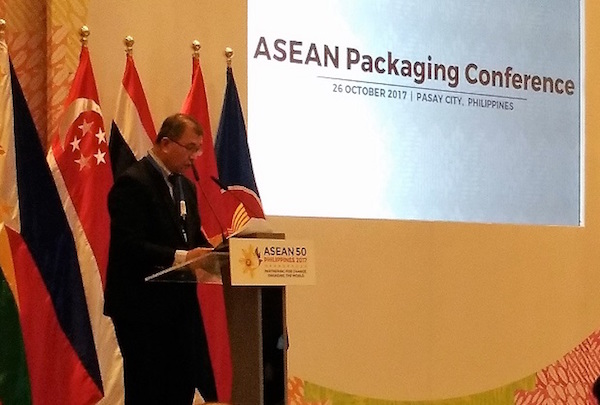The Philippines recognizes the key role of science and technology (S&T) in the packaging industry of the Association of Southeast Asian Nations (Asean).

Department of Science and Technology (DOST) secretary Fortunato de la Pena issued these remarks during the recent first Asean Packaging Conference (APC) hosted by the Philippines in Pasay City.
“Packaging is a unique industry as it serves virtually all industries. And the hypothesis that a nation’s economy is being reflected by the status and vibrancy of her packaging industry can actually be proven true,” De la Pena said.
Citing statistics, he said that an industrialized nation’s ratio of its total packaging to gross national product (GDP) to be between 1.5 to up to 1.8 while it is 2.0 for developing and emerging economies.
“In more specific terms, the reported food spoilage and product damage in industrialized countries are reported to be between 1.5 to 5.0 percent. On the other hand, high product spoilage ranging from 30 to 70 percent in developing and least developed countries is usually the result of insufficient packaging, lack of packaging appreciation, and absence of trained and skilled packaging specialists,” he said.
Packaging’s important role has been recognized, contributing to national economies, assuring food supply, and committing to environmental protection, he said.
DOST undersecretary Dr. Rowena Cristina L. Guevara said the conference held on Oct. 26 is one of the many events in celebration of the 50th anniversary of Asean being hosted by the Philippines.
Asean, formed on August 8, 1967, is comprised of Brunei, Cambodia, Indonesia, Lao, Malaysia, Myanmar, Philippines, Singapore, Thailand, and Vietnam. The region has over 630 million population as of 2016, creating the world’s third largest market.
Guevara cited the vital role of packaging with its “power to protect the product for the targeted period of time or what we call product shelf life.”
She called for stronger support to internationalize the region’s micro, small, and medium enterprises (MSMEs) for them to be successful through packaging technology, design, branding and compliance to regulations and standards, among others.
Daisy E. Tanafranca, chief of the Packaging Technology Division of the Industrial Technology Development Institute (DOST-ITDI), chaired the conference.
She said the conference served as a venue to discuss possible collaboration among Asean members in conducting packaging research and development, addressing packaging regulations hampering Asean products’ competitiveness, and developing packaging standards benefiting Asean.
Meanwhile, de la Pena acknowledged the challenges that Asean faces in packaging development in the rest of the world.
“We all know that packaging is science and technology based, thus, scientific and technological innovations are the main components in making Asean packaged products are at par, it not better, with those from industrialized countries,” De la Pena said.
He also echoed the words of Guevara who said that “packaging is considered one of the fastest growing industries in the region.”
Packaging is regarded as the world’s fourth or fifth largest industry, the DOST chief said.
From its global value of an estimated $797 billion in 2013 as reported by PIRA International, packaging by 2018 will be valued at $975 billion on a 4 percent annual growth rate, he said.
The DOST secretary further noted that information from the report titled “The Future of Packaging in 2018” that says sales in 2018 of packaging were concentrated in Asia which is 36 percent of the total in value terms.
“By 2018, Asia is predicted to present over 40 percent of global demand,” de la Pena quoted the report, noting that with the massive demand in Asia Pacific region to be driven by rapid population growth, and substantially from the improved consumer purchasing power.




